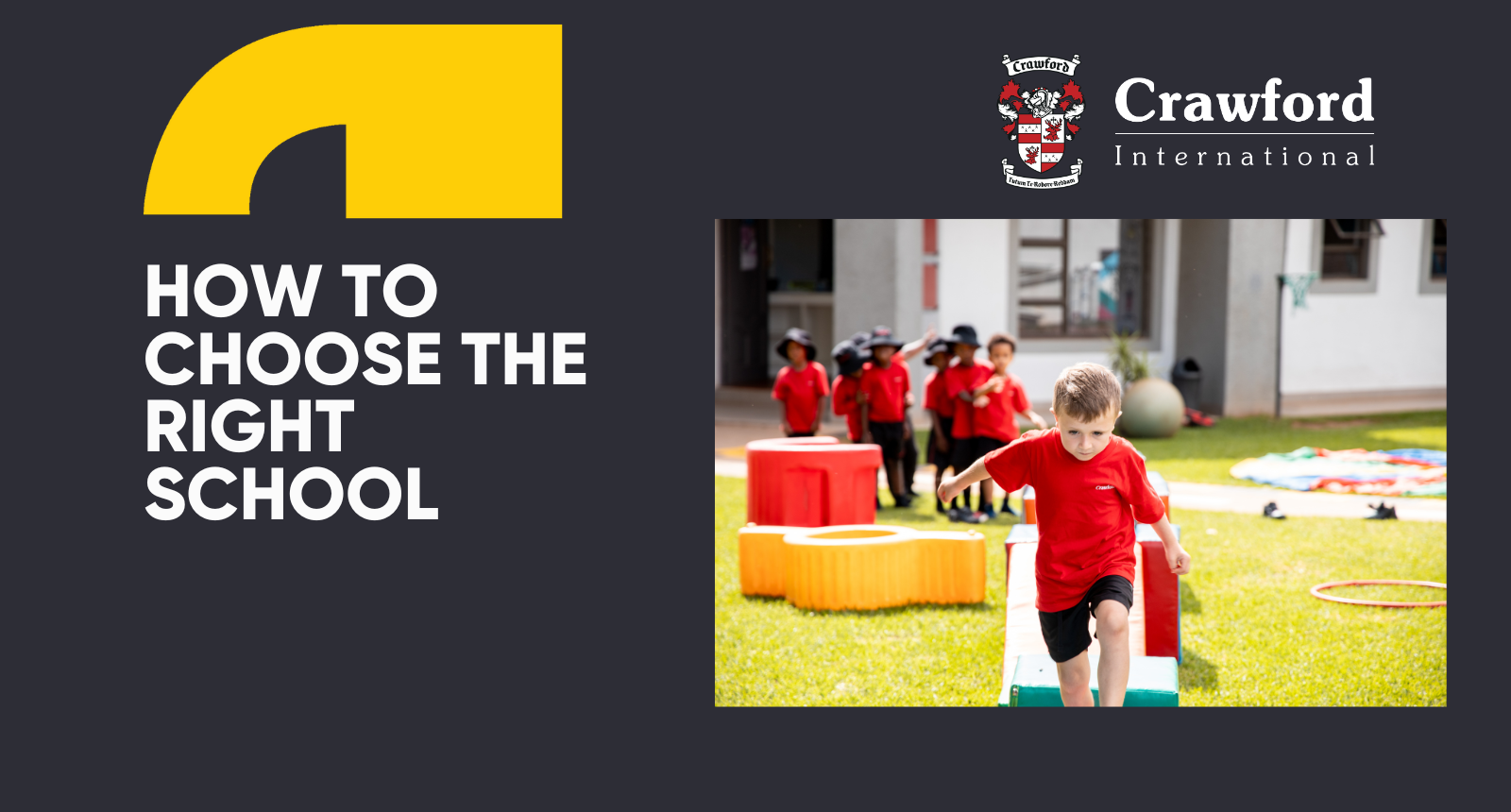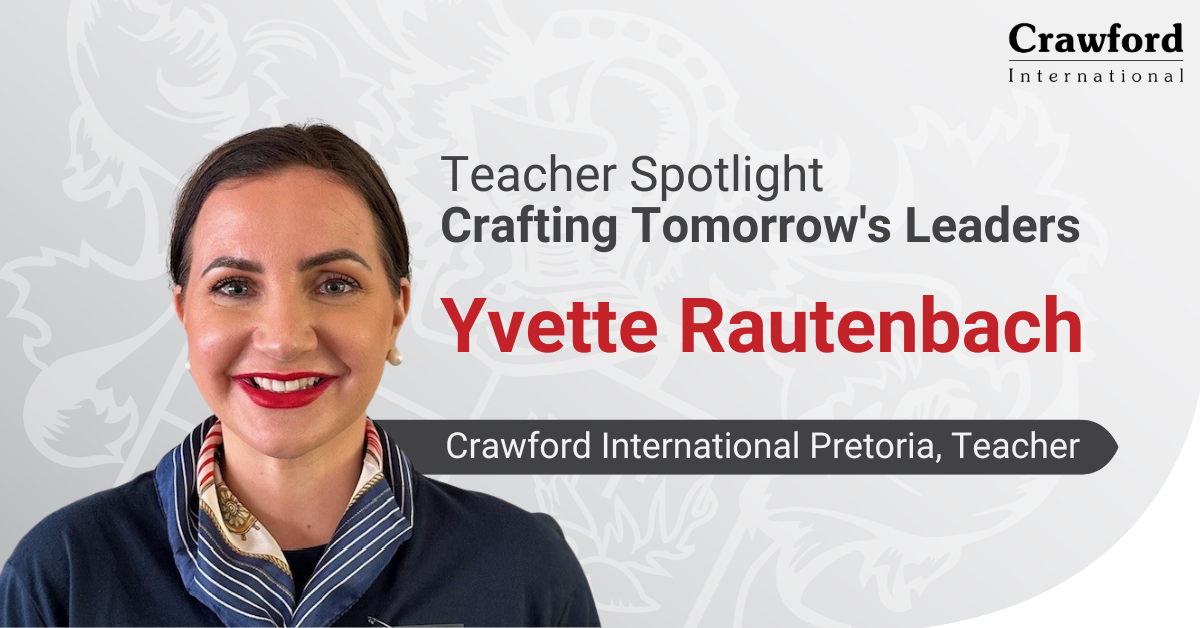Uncharted waters
Carla Kuhlmey • April 29, 2020
Uncharted Waters

Navigating through uncharted waters during this stressful time is very overwhelming for many of us and leads to anxiety and sleeplessness. Keep in mind that this is new territory for teachers, parents and our children. Find peace in knowing that we are all in the same boat. Steer your ship into calmness when there is a storm and choose the rules of your ship together as a family.
There is structure and routine at school, and children arrive knowing what lessons they have each day and are ready to engage in the wonder of their learning experience. During term time, their day starts with their usual morning routine. They make you coffee and bring you breakfast in bed, pack your lunch and rush you because they are ready and waiting in the car. Imagine how wonderful that would be! My point is, there is routine and the children learn what is expected of them each morning, from the time they wake up until the time they arrive at school. During lockdown, the routine that has always worked has dwindled into the uncertainty of what the day entails. There are no bells or alarms to assist with time management. It is difficult for the kids to shift their mind-set and realise that home is now school. There are so many toys to play with and their play station calls out hourly.
Tip One
• Pre-primary and Primary learners - Create a visual timetable.
There are editable, free examples available. Below is an example.
The pictures will cue what happens next. Include the usual morning routine pictures( dressing, breakfast, teeth etc.) and add the new pictures ,such as a laptop or IPad for their online morning greeting with their teacher, maybe a see saw logo when it’s time to complete those activities etc. It is important to include a family time, exercise or outdoor activity and quiet time picture. You need your time to do work, cook and clean so add that in so they know you are busy during those times.
• Senior and College Phase learners - Formulate a timetable with your children. They will have some idea of their workload and limits of sustained concentration. Help them schedule in suitable breaks and down time. Do not forget to add in their chores, responsibilities, and outdoor activities.
There is an endless amount of work to do. Cleaning, cooking, working and now you have to assist the teachers in teaching your children. It is all very overwhelming and results in stress, anxiety and worst of all GUILT! It is important to realise that when you scream at your child because they asked you to play while you are trying to reply to the 200 emails sitting in your inbox, you are not alone. So many parents are finding this a challenging time. This epidemic has caused stress in every family; it may just be packaged differently.
Tip Two
• Reach out for help - When you feel anxious or overwhelmed reach out for help or an ear to listen.
• Positive mind-set – Remind yourself of the positive elements of your situation. You are safe in your home with your family. Your kids will love knowing you are close by. The forced family time builds strong connections and opens up pathways of communication. You are able to give your child individualised attention during the ‘School day’, which is invaluable. So many parents, although really struggling, are so grateful to understand their child’s strengths and weaknesses.
• Organisation and Planning- Do your best to manage your time and plan each day to ensure you can complete your daily-required tasks.
• Mindfulness- Be mindful of your emotions and know your limits. When you feel the symptoms of your different emotions manifesting, such as a warm sensation in your cheeks due to anger or frustration, remove yourself from the situation and breathe. That is a good time to signal to your partner, if they are available, to step in. You can only do what you can do!
• Focus on one thing at a time- It is importance to realise that it is acceptable for you to lose control and act irrationally. It is impossible for each day to run smoothly. Your children will be more difficult on days and it is not the end of the world if your house is upside down. Take a step back, breathe and focus on one task at a time. You may need to lower your expectations to ensure you and your family are able to achieve realistic goals.
• Maintaining a healthy lifestyle- These habits are essential in keeping our bodies and minds, strong and equipped to deal with our daily challenges. This will improve your physical, mental, and emotional health. Exercise will reduce stress and improve cognitive function. The endorphins released during exercise will make you feel good and assist in creating a positive mind-set.
This experience has certainly brought about many challenges and feelings of anxiety and stress. We are all in this together and need to reach out and support one another in our learning community. Feelings of guilt and failure will soon reduce as you listen to others experiencing the same feelings. Crawford North Coast is a family who looks after every masterpiece under its roof, including the parents. We are here to support you and your children during this time. Remember your best is good enough!
“Ships don’t sink because of the water around them: ships sink because of the water that gets in them. Don’t let what’s happening around you get inside you and weigh you down.”
Pick up your bucket, empty the unwanted water and set sail into the uncharted seas of online teaching. Good Luck, you know how to reach us.
Carla Kuhlmey
Teacher - Crawford Preparatory North Coast

How to Choose the Right School Choosing the right school is one of the most significant decisions a parent can make; it shapes not only a child’s education but also their values, confidence and outlook on life. In South Africa, where the range of schooling options is broad – from public and independent schools to boarding, online and blended models – this choice requires careful thought. Understanding Your Child’s Needs The process begins with your child. Every student is unique, and the right school should align with their learning style, personality and interests. Parents can start by reflecting on how their child thrives; do they excel in collaborative environments, or do they prefer structured, independent work? Are they drawn to sports, arts or technology? At Crawford International, for example, we see the benefits of providing varied academic and extracurricular opportunities to meet diverse needs. Our students engage in subjects and activities that allow them to discover their strengths while building the confidence to address areas of growth. Considering Academic Approach and Curriculum A school’s academic offering goes beyond its curriculum. While it is important to consider whether a school follows CAPS, or the IEB, parents should also ask how learning is approached. Is it purely content-driven, or does it emphasise critical thinking, creativity and collaboration? Research by Spaull (2022) suggests that educational success is increasingly linked to skills such as problem-solving and adaptability – qualities developed through inquiry-based and experiential learning. Schools that integrate technology effectively, like through Crawford’s EdTech innovation hubs and digital platforms, prepare students for a world where information is accessible, but the ability to interpret and apply it is what truly matters. Evaluating Facilities and Resources Facilities are not merely aesthetic; they reflect a school’s priorities. Well-equipped science laboratories, technology centres, libraries and sports amenities indicate a commitment to balanced development. South African studies highlight the correlation between infrastructure and student performance, with well-resourced schools often achieving higher engagement and academic outcomes (DBE, 2021). Exploring School Culture and Values The right school should feel like the right fit. Culture is shaped by values, communication and the relationships between students, teachers and parents. Visiting a school on an Open Day or arranging a private tour allows families to experience the atmosphere first-hand. Observe whether students appear engaged, whether teachers connect meaningfully with them, and how diversity and inclusion are embraced. Location, Logistics and Support Systems Practical considerations such as location, transport and aftercare can influence the decision. For some families, boarding may be an option, particularly where distance or lifestyle factors make daily commuting challenging. The availability of academic support programmes, counselling services and communication tools like Toddle ensures parents remain connected to their child’s progress in real time. Making an Informed Decision Ultimately, choosing the right school is a balance between head and heart. Use objective information such as academic performance, facilities and curriculum, but also trust your instincts when it comes to culture and fit. The South African Schools Act empowers parents to make decisions in their child’s best interest, and with the variety of quality schools available, the focus should be on finding an environment where your child will flourish academically, socially and emotionally. The journey to choosing a school may feel complex, but with the right questions and a clear understanding of your child’s needs, you can make a decision that sets them on a path to lifelong learning and success.

Open Days and School Tours: What Parents Need to Know As parents consider the best school for their child, Open Days and school tours present a valuable opportunity to experience a school’s ethos, environment and offering beyond the website or brochure. With Crawford International’s Gauteng campuses hosting their Open Day on 6 September , now is an ideal time for families to prepare meaningfully for this milestone in the admissions process. Why Open Days Matter Open Days give prospective families the chance to walk the grounds, meet teachers and school leadership, observe students in their learning environment and get a genuine feel for the school community. These visits provide insights that go beyond test results and academic reports; they reveal whether the school’s values, communication style and approach to learning feel right for your child. Research shows that school visits play a significant role in influencing parents’ final decisions and improving satisfaction with school placement outcomes (OECD, 2021). What to Look For When visiting a school, pay close attention to the atmosphere in the classroom. Are students engaged? Is the space warm and welcoming? What role does technology play in day-to-day learning? At Crawford International, families often notice a culture that encourages students to ask questions, challenge assumptions and explore content through real-world connections. Facilities can also tell a story. Whether it’s a well-resourced science lab, a digital innovation hub, inviting sports fields or performance spaces, the layout and design reflect the school’s broader vision. According to research by Edutopia (2020), school infrastructure directly impacts student learning, motivation and wellbeing. At Crawford, we’ve created environments that support future-focused learning. You’ll find spaces designed to inspire collaboration, creativity and independence. Questions to Ask During a Tour To make your visit count, come prepared with a few thoughtful questions. This helps you gain a clearer sense of what matters to the school and how your child might be supported there. You could ask: How are students supported academically and emotionally? What enrichment and extra-curricular programmes are available? How does the school encourage positive discipline and wellbeing? What are the communication tools used between teachers and parents? Are there opportunities for leadership, service and global engagement? If you are also considering boarding, it’s a good idea to ask about daily routines, support structures, supervision and how weekends are spent. The South African Council for Educators (SACE, 2022) notes that transparent communication and pastoral support are key markers of quality educational institutions. Crawford’s Open Day At Crawford International, Open Days are more than a walkthrough. They are a chance to see how we live out our values. Across all phases from Pre-Primary through to College we encourage students to take ownership of their learning. Our aim is to nurture curious, confident, and capable young people who understand their role in the world around them. On the day, families have the chance to speak directly with teachers and students, explore classrooms where technology is integrated, and learn more about how we personalise learning to meet individual student needs. It’s also an opportunity to see how we build critical thinking, collaboration and character into everyday learning experiences. Choosing a school is about more than academics. It’s about finding a community where your child feels seen, supported and challenged in all the right ways. Open Days are one of the most important steps in that journey. So come prepared. Ask questions. Walk through the spaces. Speak to students and teachers. Crawford International Gauteng campuses open their doors on 6 September [UB2] . Our North Coast campus in KwaZulu-Natal, which offers boarding facilities, welcomes families throughout the year; every day is an Open Day. We invite you to take a closer look and see how we are helping students grow into their fullest potential both in the classroom and beyond

ALUMNI SPOTLIGHT: KEITH Saramago Crawford International Lonehill | Class of 2013 From a spirited student on the soccer field to a professional, navigating global financial markets, Keith Saramago’s journey is grounded in resilience, clarity and purpose. Keith matriculated from Crawford International Lonehill in 2013. One of his standout memories was helping his team win a soccer competition at an inter-campus event. “We were the underdogs, but we played with heart. That win taught me early on that belief and teamwork can shift outcomes,” he recalls. After school, Keith pursued a Bachelor of Commerce Honours in Financial Analysis at Stellenbosch University. There, he encountered mentors who guided him through his postgraduate studies and helped him understand how to shape his ambitions into a viable career path. “Those mentors helped me map out not only my strengths but also what to expect when entering a competitive field,” he says. Keith now works as a Treasury Dealer, focusing on foreign exchange and money market funds for various South African corporates. What keeps him engaged is the unpredictability of the work. “Financial markets respond to global trends in real time. No day is ever the same, and that constant shift is what I thrive on,” he shares. He credits Crawford for helping him build a strong foundation. “Crawford gave me the confidence to speak up and engage meaningfully with others. It helped me develop a point of view and the courage to stand by it,” he says. He also speaks to the importance of staying grounded. “Respecting others while remaining true to yourself is a lesson I continue to apply,” he adds. Outside the professional world, Keith treasures building a life with his wife, calling their marriage one of his proudest achievements. He stays in close contact with many of his former classmates and values those bonds deeply. “We still catch up often. Some of us have moved across the globe, but the friendships have remained intact.” Looking ahead, he plans to further his studies and explore new professional opportunities across the continent and abroad. His advice to current students is straightforward: “Identify what you love and pursue it with intention. Silence the noise and trust what you know is meant for you.” Keith’s story reflects the balance between professional excellence and personal fulfilment and the courage to stay true to both.

Teaching with Purpose, Passion and Precision In the heart of Crawford International La Lucia’s Preparatory School, you will find a Mathematics classroom where curiosity is championed, and confidence is cultivated. At the centre of it all is Vanessa Majola, a dedicated teacher and Head of Mathematics who has been part of the Crawford community since 2018. With experience across schools in Germany and South Africa, Vanessa brings both global perspective and personal passion to her teaching. From the outset, her commitment to education has been clear. As a teenager, she taught Sunday School at her local church and later shadowed teachers during her Grade 9 year in Germany. The experience confirmed what she already sensed, teaching was more than a profession. It was a calling. Joy in the Journey “Some of my most rewarding moments come when a student realises that they can do Maths,” Vanessa says. “Watching them move from self-doubt to self-belief is powerful.” One such moment stays with her. A student who joined her Maths support group in Grade 4 had struggled with foundational concepts. Through steady support and the student's own determination, she eventually earned recognition for top Maths achievement in Grade 7. “It’s not just about marks,” Vanessa adds. “It’s about growth. It’s about ownership. That’s where the transformation lies.” Vanessa is quick to credit her students’ effort and resilience. “When they work together to solve complex problems or persist through a challenge, I see something special. They are not just learning Mathematics, they are learning how to learn.” A Crawford Classroom Built on Curiosity At Crawford La Lucia, Vanessa finds that students are motivated, hard-working and eager to take responsibility for their own progress. Many go beyond the curriculum, seeking out advanced topics and entering Mathematics competitions. It is an environment that celebrates both inquiry and rigour. What sets Vanessa apart is her commitment to teaching not only the how but the why. Her lessons are rich with visual and hands-on learning. She uses tools like GeoGebra to help students visualise abstract concepts, and she regularly incorporates manipulatives to support deeper understanding. Mistakes are welcomed and examined, not avoided. “They’re an essential part of the process,” she explains. “We unpack them together so students can learn from them.” Teaching Philosophy Vanessa’s teaching approach is deeply influenced by the quote from Benjamin Franklin: “Tell me and I forget. Teach me and I remember. Involve me and I learn.” For her, involvement is everything. She subscribes to an inductive style of teaching, providing students with examples and encouraging them to discover patterns and principles themselves. “It’s not about racing through content. There’s little value in covering a syllabus if it doesn’t actually connect with the students. I want them to think, to explore, to make meaning of what they are learning.” Thinking About the Future of Education While Vanessa embraces educational technology as a valuable asset, she sees human connection as irreplaceable. “Technology enhances what we do. It allows us to tailor learning, track progress and present content in dynamic ways. But at the heart of every great classroom is a teacher who understands and guides their students.” She believes the role of the teacher is evolving – from being the centre of knowledge to becoming a facilitator of deeper understanding. For Vanessa, this shift is essential if students are to leave school equipped not just with facts but with skills, adaptability and confidence. Inspiration and Advice Inspired by the work of educational researcher Jo Boaler, Vanessa brings a growth mindset into her classroom every day. She reminds her students that mistakes are opportunities for brain growth, that challenges build cognitive strength, and that everyone is capable of learning Mathematics. To parents, she offers thoughtful encouragement: Focus on your child’s progress over comparison to others. Use language that nurtures resilience and curiosity. Emphasise effort and strategy over fixed ability. Remember that academic success is just one part of a child’s broader development. “Students are far more motivated when they realise that they have control over their outcomes,” she says. “That belief in possibility is what we need to foster in the classroom and at home.” In a world where education is evolving, Vanessa Majola remains rooted in what matters most, connection, curiosity and care. Her classroom is a space where students are not only learning Mathematics but discovering their capacity to think, grow and thrive.

Beyond the Classroom: The Role of Parents as Educational Partners In today's changing educational landscape, the idea that learning only happens at school is no longer true. Schools and families working together on education is the most effective way to do it. Parents as educational partners means more than just helping with schoolwork. It is making a long-term, joint commitment to helping a child's emotional, social, and intellectual growth. Why Parental Partnership Matters Many studies have shown that when parents are involved in their children's lives, they do better in school, have better control over their emotions, and feel more motivated (OECD, 2021).When parents are engaged, students experience a sense of consistency between home and school. This alignment reinforces values, supports positive behaviours, and cultivates a lifelong love of learning. Some schools facilitate this through digital communication platforms that provide parents with real-time insight into classroom activities, feedback and progress. This transparency allows parents to reinforce learning at home and address challenges proactively. From Engagement to Partnership Going to parent-teacher meetings or school events is not enough for a good educational collaboration. They require open dialogue, mutual respect and a shared commitment to the student’s growth. At different stages of schooling, parental involvement may take on various forms: Pre-Primary and Preparatory: Reading to kids, playing educational games, and asking questions and having discussions to spark their interest. College Phase: Helping students choose their subjects, talking to them about their future goals, and teaching them how to manage their time and deal with their emotions. Parents' roles change, but the main premise keeps the same: build a secure support system where the child feels seen, listened, and encouraged. Building trust and a sense of shared duty Parents and teachers need to talk to one other on a regular basis. Whether through digital platforms, face-to-face meetings or school-led workshops, the goal is to ensure that families feel informed, respected and involved. Giving parents chances to take part in strategic projects, student celebrations, and community-building events is a great way to deepen the school-home connection. This shared responsibility not only helps students do well in school, but it also shows young people how to work together and respect one another. Promoting independence and responsibility While partnership is essential, it is equally important to support student independence. Parents play a critical role in encouraging autonomy by allowing children to take ownership of their learning, make decisions, and experience natural consequences in a safe and supportive environment. By guiding rather than directing, and supporting rather than rescuing, parents help students build resilience and confidence. This balanced involvement nurtures individuals who are capable of self-reflection and personal growth. In conclusion, learning doesn't happen in a vacuum. It is a group effort that works best when people work together in a meaningful way. When parents, teachers and school leadership work in partnership, students benefit from a coherent and supportive learning environment. Through open communication, mutual respect and shared purpose, we can ensure that every student is equipped not only to succeed academically, but to flourish in life.

Meet Mashudu Bhengu: Bringing out the best in her students at Crawford International Lonehill Teaches : Zulu to Grades 1-4 Qualifications: Bachelor of Education: Early Childhood and Foundation Phase (UNISA) Hobbies and interests: Avid reader and gym enthusiast – it keeps her sane and grounded! Teaching is About Serving and Giving Back: Before choosing teaching, Mashudu Bhengu was interested in pursuing a career in nursing or social work, drawn to community service and giving back. In 2013, volunteering at an NGO in Lawley, she facilitated after-school classes for disadvantaged children. This experience sparked her passion for teaching, leading her to enrol in teaching studies at UNISA. One of Mashudu’s favourite aspects of working with children is their purity and honesty. She finds immense joy and fulfilment in teaching, seeing her efforts and commitment reciprocated with love and enthusiasm by her students. For Mashudu, no other career could bring such personal satisfaction. On Her Mentor and Teaching Influence: Mashudu vividly remembers her Grade 3 teacher, Mrs Harding, who significantly impacted her life. Mrs Harding’s patience, empathy, and unwavering support inspired Mashudu’s teaching career. Mashudu aspires to be a ‘Mrs Harding’ for her students, boosting their confidence, instilling a love of learning, and encouraging them to strive for more. On Her A-ha Moments: As a foundation phase teacher, Mashudu often wonders how much her young students absorb. But she is vindicated when she sees them apply their learning to solve problems, which gives her real thrill to see then work things out for themselves. Her A-ha moments come not just from their academic achievements, but also from witnessing her students develop as unique individuals. For Mashudu, teaching at the foundational stage is a profound journey, extending well beyond ‘subject matter’. While she may be teaching Zulu, Mashudu also knows she is nurturing young minds and hearts, instilling essential social, emotional, and life skills. On Teaching at Crawford International: Mashudu loves Crawford’s student-centred approach and the mutual respect between students and teachers. At Crawford, teachers encourage students to be self-empowered, curious, and responsible for their success. They teach the value of kindness, resilience, and curiosity, helping students navigate their emotions and interactions. The pride Mashudu feels when her dedication resonates beyond the classroom is immense. In her Zulu classes, Mashudu balances her student’s tech exposure with activities like singing, music, dancing, and rhymes, engaging all senses and learning styles. These activities provide a welcome break from technology, allowing children to enjoy spontaneity and just be children. Personal Philosophy: One of Mashudu’s favourite quotes is by Will Smith: “Following your dreams is a lonely, solitary, scary pursuit. You can't wait for somebody to think you can do it. You have to be willing to risk everything to become that seed of what you believe is in there. You have to be fearless. You have to be relentless in the pursuit of your dream.”

ALUMNI SPOTLIGHT: ROXANNE VAN DER WESTHUIZEN Crawford International Lonehill | Class of 2009 From the banking halls of one of South Africa’s most prestigious financial institutions to the stages and studios of New York City, Roxanne Van der Westhuizen’s story is one of courage, reinvention and the pursuit of purpose. Chasing the Calling After matriculating from Crawford International Lonehill in 2009, Roxanne was accepted into the Psychology programme at the University of Cape Town. A sudden family crisis and financial hardship brought her back to Johannesburg, where she began working to support her family. Years later, determined to finish what she started, she enrolled at Varsity College in Sandton. Balancing motherhood, full-time employment and a rigorous academic load, she earned her degree with distinction, graduating at the top of her class. Her career began at Investec Bank, where she rose through the ranks, first in client services and later in data analytics. Her success came through persistence, grit and repeated setbacks that ultimately redirected her. A moment of deep personal reflection led her to reconnect with a long-suppressed calling, storytelling through performance. In a bold leap of faith, she left her corporate life behind and relocated to New York to pursue acting. There, she studied under renowned acting coach Terry Knickerbocker, known for mentoring names such as Sam Rockwell and Daniel Craig. She was named Student of the Season at his studio. Today, Roxanne stars in stage and screen productions across the U.S., including her lead role in the upcoming film Emancipation of the Past (July 2025), and a standout performance as Regina in Not to Be Played With (available on Tubi and AppleTV). She is also developing her own series, which she plans to take to festivals and production houses. Achievements and Projects Lead role in Emancipation of the Past (2025 release) Featured in Not to Be Played With on Tubi and Apple TV Collaboration on Spicy Bob alongside Pete Simpson of Blue Man Group Student of the Season at Terry Knickerbocker Studio Creator and writer of a new series currently in development Roxanne reflects on her journey and earning one of her biggest roles yet, “this is the most difficult thing I’ve ever had to do, but also the most enriching. The vulnerability required in acting is daunting, but it connects me to myself and others in ways I never imagined. Despite the false starts and failures, I am exactly where I am meant to be.”





